We are starting to see an ever-so-slight increase in SARS-CoV-2 in wastewater in the western states. On a national level, wastewater viral activity for COVID is “MINIMAL” still. Hawaii has the highest level of SARS-2 in wastewater now, followed by Idaho. Here in the Bay Area, Santa Clara county reports “MEDIUM” levels of COVID in the wastewater of its four wastewater plants. In California, Sausalito, Santa Cruz, Laguna Niguel and San Rafael have COVID virus levels over 300 PMMoV. Biobot announced today that they will be sunsetting their dynamic COVID dashboard.
Hospitalizations and Emergency Department visits are no longer being reported nationally. KP.2 is now responsible for 28% of COVID cases and it is slowly squeezing out other competitor variants. According to JP Weiland, about 1 in every 192 people currently infected with COVID and he expects the number of cases to start to increase somewhat because of the FLiRT variants like KP.2.
Acute COVID infections, General COVID info
Reporter Katharine Lang reviewed some of COVID’s effects on the brain in an article in the BMJ. Neurologic symptoms after COVID infection can include fatigue, difficulty concentrating, and long-term cognitive defects. COVID infection can lead to a reduction in brain volume related to a reduction in neuron cell bodies and cytokines have been found to activate astrocytes in the brain causing neuroinflammation. Low peripheral serotonin reduces vagus nerve signaling to the hippocampus which can affect learning, memory, and emotion. COVID's effect on endothelial cells that line blood vessels can lead to microbleeds and strokes. The author suggested that COVID’s effect on the brain will lead to increased dementia as well. Two other articles this week support that SARS-CoV-2 infection can lead to Alzheimer’s disease and Parkinson’s disease.
An article in Lancet Neurology describes how SARS-CoV-2 infection can cause neurodegeneration. SARS-CoV-2 infection can cause vascular injury in the brain via infection of the endothelial cells that line blood vessels. COVID infections also increase the risk of blood clots which can lead to stroke. Even mild COVID infection can lead to neuroinflammation in the brain. In vitro, SARS-CoV-2 infection increases clumping of tau protein which is associated with Alzheimer’s disease. SARS-CoV-2 viral proteins also contain amyloidogenic regions, which could potentially lead to amyloid formation. The authors state that "SARS-CoV-2 infection should be considered as a risk factor for Alzheimer’s disease, even though the distinction between causation versus disease acceleration is not clear.“ They concluded, “In our opinion, antiviral therapy should be considered even for moderate SARS-CoV-2 infections to reduce the severity of symptoms and limit the likelihood of sequelae. Patients (especially children and those with post-acute sequelae [Long COVID]) should be supported and followed up.” I agree.
From: https://www.thelancet.com/journals/laneur/article/PIIS1474-4422(24)00178-9/abstract
Another study this week shows that SARS-CoV-2 infection increases the risk of Parkinson’s disease in human embryonic stem cell (hESC)-derived dopaminergic (DA) neurons and in DA neurons in hACE2 Tg mice. In dopamine neurons, persistent neuroinflammation appears to be mediated by astrocytes and microglia.
There is an FDA approved test for traumatic brain injury (TBI) called the Banyan Brain Trauma Indicator (BTI) Assay that tests for blood levels of glial fibrillary acidic protein (GFAP, a marker of astroglial injury and neuroinflammation) and ubiquitin C-terminal hydrolase (UCHL1, a marker of neuron death). A group repurposed the BTI assay to check for brain injury in people with critical acute COVID infection. Generally, UCH-L1 and GFAP blood levels tend to increase with age. “Controlling for age, UCH-L1 and GFAP were significantly elevated in COVID-19 patients compared to non-COVID-19 controls.” In patients with neurologic symptoms, UCH-L1, but not GFAP, was found to be elevated. The authors recommend adding Neurofilament Light Chain (NfL) to the test since that is associated with brain injury and post-acute COVID as well.
A review from Canada shows that Black individuals with acute COVID infection had substantially higher risk of Venous thromboembolism (VTE) compared to White or Asian people. The authors recommend increasing awareness among Black individuals about the signs of blood clots and educating medical staff about this increased risk.
Fig. 3 Pooled prevalence of VTE in different racial identity groups.
From: https://www.thrombosisresearch.com/article/S0049-3848(24)00159-2/fulltext#%20
A new study from Dr. Ziyad Al-Aly and colleagues at the Veterans Administration hospitals shows that COVID infection is still more deadly than the flu. During the 2022-2023 season, hospitalized COVID patients were at a 61% higher risk of death than those admitted for influenza. In the 2023-2024 respiratory virus season, there was a 35% higher risk of death for patients admitted with COVID infection versus the flu. Overall, the number of deaths was much higher for COVID since there were 2 times more patients with COVID infections admitted to the hospital than were admitted for the flu. As Dr. Al-Aly tweeted,
“1. Covid still leads to more hospitalizations than flu.
2. Covid still leads to more deaths than flu.”
While studying how COVID infection in mice triggers gut impairment, authors found that the SARS-CoV-2 Spike protein induced intestinal chloride secretion causing intestinal edema, and was associated with leukocyte infiltration, reduced glutathione levels, and increased cytokine levels. Gut Paneth cells made less lysozymes, goblet cells made less mucin and jejunal smooth muscle could not contract as well in response to the virus’ spike protein. The mucosal intestinal barrier was disrupted as well.
The NIH and the University of Maryland School of Dentistry found that SARS-CoV-2 infection of acinar cells in human salivary glands leads to a reduction in histatin-5 which allows a concomitant increase in oral Candida Albicans fungal infections.
The FDA issued a warning letter about Cue Health’s home COVID tests last week due to false results. They told people to throw out the tests.
We know that ventilation is important to reduce COVID infections. A new study shows one reason why. It turns out that SARS-CoV-2 can be transmitted to others more easily when the ambient CO2 concentration in the room increases. Higher CO2 levels of even 800 ppm allow SARS-2 to be more aerostable. Therefore, it is critical that we improve indoor air quality to decrease COVID transmission.
This week, I learned about a site called Lit COVID from the NIH. It is a curated hub for articles on all things COVID.
Pediatrics
Twelve months after COVID infection, 7% to 8% of children and young people (CYP) had cognitive impairment. Cognitive dysfunction waxed and waned in some children at different points over the year since acute infection. In general, cognitive impairment was higher in females, those of white race, and kids who were older when they got their first COVID infection. “Consistently at all time-points, CYP experiencing cognitive impairment had worse mental health, were more mentally fatigued, had poorer well-being and more trouble sleeping compared to those who did not experience cognitive impairment.”
An article in the Pediatric Infectious Disease Journal shows that children with Long COVID have impaired exercise capacity. Kids with Long COVID were noted to have a low VO2 peak (oxygen uptake at the peak of exercise) on Cardiopulmonary Exercise Testing (CPET). The study compared sixty-one 12 to 15 year-olds with Long COVID to 30 healthy controls.
Pregnancy
A large study from California compared perinatal health data from 2019 to 2020. It found that "SARS-CoV-2 infection is tied to increased preterm birth (PTB), high blood pressure during pregnancy, and severe maternal morbidity." Of note, COVID vaccination was not available for pregnant individuals until early 2021.
When pregnant individuals infected with asymptomatic or mild COVID infections presented to the hospital in labor, scientists were able to predict the severity of COVID infection at delivery dependent on three variables- gestational age at delivery admission, having a hypertensive disorder in a prior pregnancy, and systolic blood pressure at admission. Using these 3 variables, the model predicted who would go on to have a moderate, severe or critical COVID infection at the time of delivery.
Immunocompromised people
Evusheld had previously been given as pre-exposure prophylaxis to immunocompromised individuals to protect them against COVID infection. However, it was pulled from the market when it no longer worked against newer variants. A new Phase III study shows that a new long acting monoclonal antibody called Sipavibart protected immunocompromised people from COVID infection with newer variants.
Vaccines
A Phase I, first in-human study shows that we may be closer to getting a universal COVID vaccine that could be variant-proof. "SpFN/ALFQ [SARS-CoV-2 vaccine] was well tolerated and elicited robust and durable binding antibody and neutralizing antibody titres against a broad panel of SARS-CoV-2 variants and other sarbecoviruses." Phase I studies are the first step in getting a vaccine approved.
A press release from the European Society of Cardiology meeting shows that COVID-19 vaccination can help people with heart failure live longer and healthier lives. Vaccination was associated with an 82% lower risk of all-cause mortality, 47% lower risk of hospitalization for heart failure, and 13% reduced risk of COVID-19 infection compared with no vaccination.
Long COVID
This week, two conferences with information on Long COVID took place. The PolyBio Spring Symposium reviewed findings from PolyBio researchers on Long COVID. A “mega thread” of 179 tweets on this conference can be found here. The Unite to Fight Conference looking at ME/CFS and Long COVID took place on May 15-16, 2024. Transcripts of that conference should be available in the near future.
Neuro Long COVID
Oftentimes, regular MRIs are read as being normal for Long COVID patients. However, using functional MRI, a group from China compared 25 people who had had mild to moderate COVID infection, 27 who had severe or critical COVID, and 35 healthy controls. Two years after COVID infection, cognitive symptoms were found to be similar after mild COVID and severe COVID- "individuals recovering from [both mild and severe] COVID-19 continue to experience cognitive complaints, psychiatric and neurological symptoms, and brain functional alteration. The rs-fMRI results indicated that the changes in brain function in regions such as the putamen, temporal lobe, and superior parietal gyrus may contribute to cognitive complaints in individuals with long COVID even after 2-year infection."
Figure 2: https://www.thelancet.com/journals/lanwpc/article/PIIS2666-6065(24)00080-4/fulltext#%20
A study previously showed that a leaky blood-brain barrier in combination with inflammation could be the main drivers of cognitive dysfunction in Long COVID in humans. A new study from USC showed that in mice, there was "clear evidence of microvascular damage and breakdown of the blood-brain barrier (BBB)... and the blood-cerebrospinal fluid barrier at the choroid plexus." The leaky BBB and the leaky choroid plexus barrier "may contribute to the neurological complications both acutely and in Long COVID."
In non-COVID news, the CDC unveiled a new wastewater dashboard for Avian Flu Influenza A H5N1. Wastewater testing in Texas has found H5N1 bird flu in 9 Texas cities. The Los Angeles Times reports that some raw milk enthusiasts believe that they will get immunity to H5N1 by drinking infected raw milk, but scientists warn that they might just get very sick.
From: https://www.cdc.gov/nwss/wastewater-surveillance/Flu-A-data.html
A new study shows that for measles vaccination, babies born by cesarean section were 2.6 times less likely to make adequate antibodies after the first dose of the vaccine. After the second dose of vaccine, babies born by c-section did make a normal amount of antibodies.
The Oklahoma State University College of Osteopathic Medicine at the Cherokee Nation opened in 2020. They just graduated their first class of native American medical students.
OSU CENTER FOR HEALTH SCIENCES/MATT BARNARD
When asked what he had been up to prior to his Rookie of the Year press conference, basketball star Victor Wembanyama surprised reporters when he said that he had been explaining dark matter to children at the San Antonio Education Center & Planetarium. NBC wrote, “When LeBron James called Wembanyama an alien, he wasn’t kidding.”
From https://twitter.com/spurs/status/1789449171620991150
Have a great rest of your weekend,
Ruth Ann Crystal MD
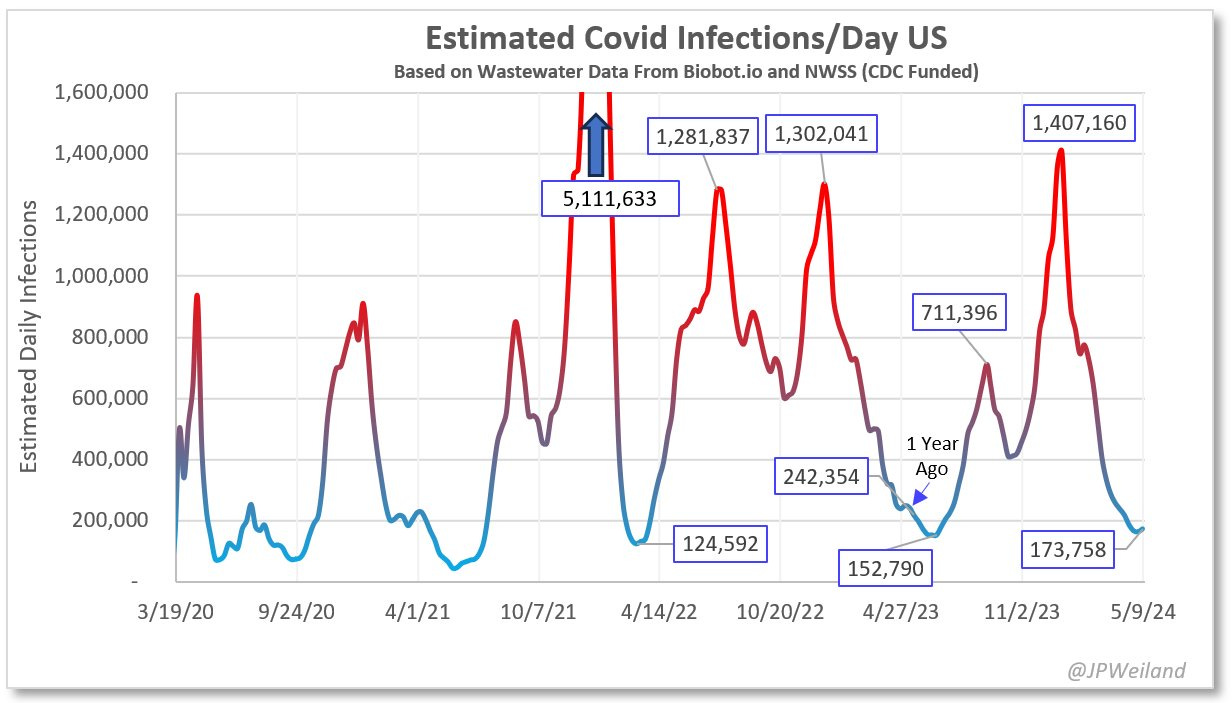
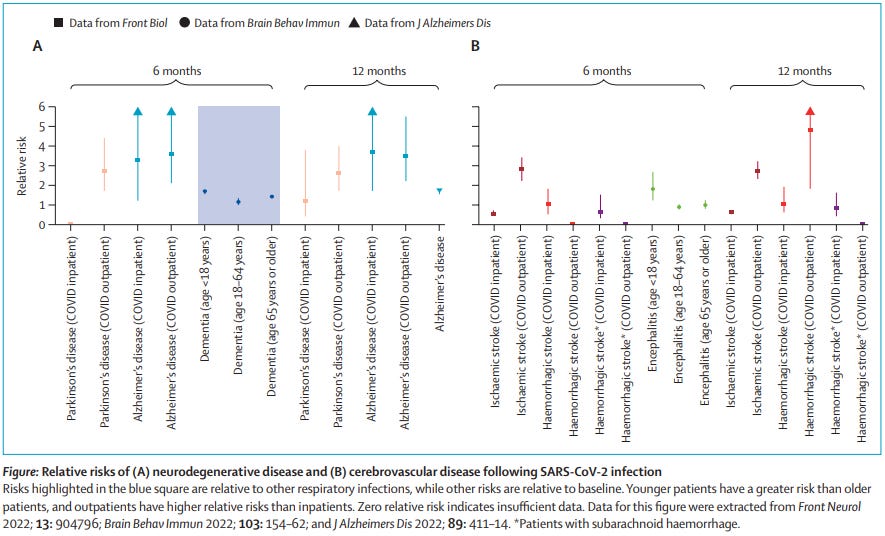
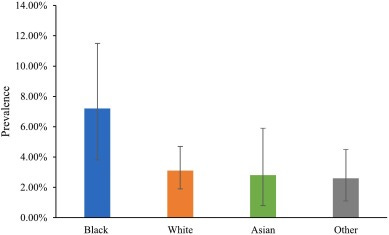

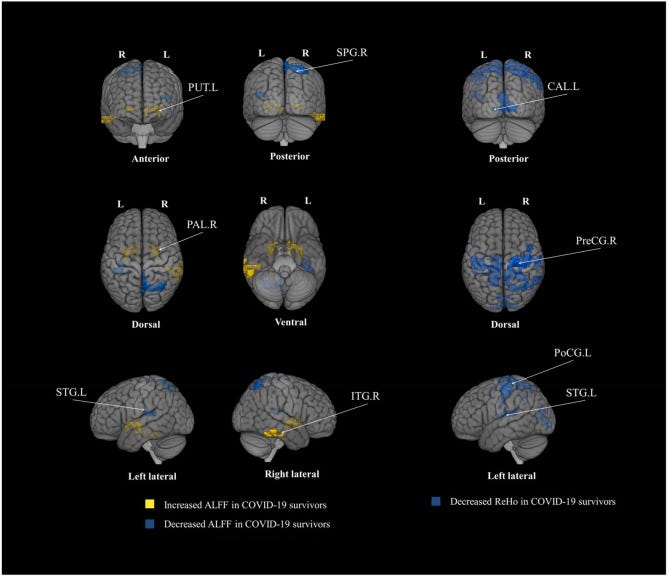
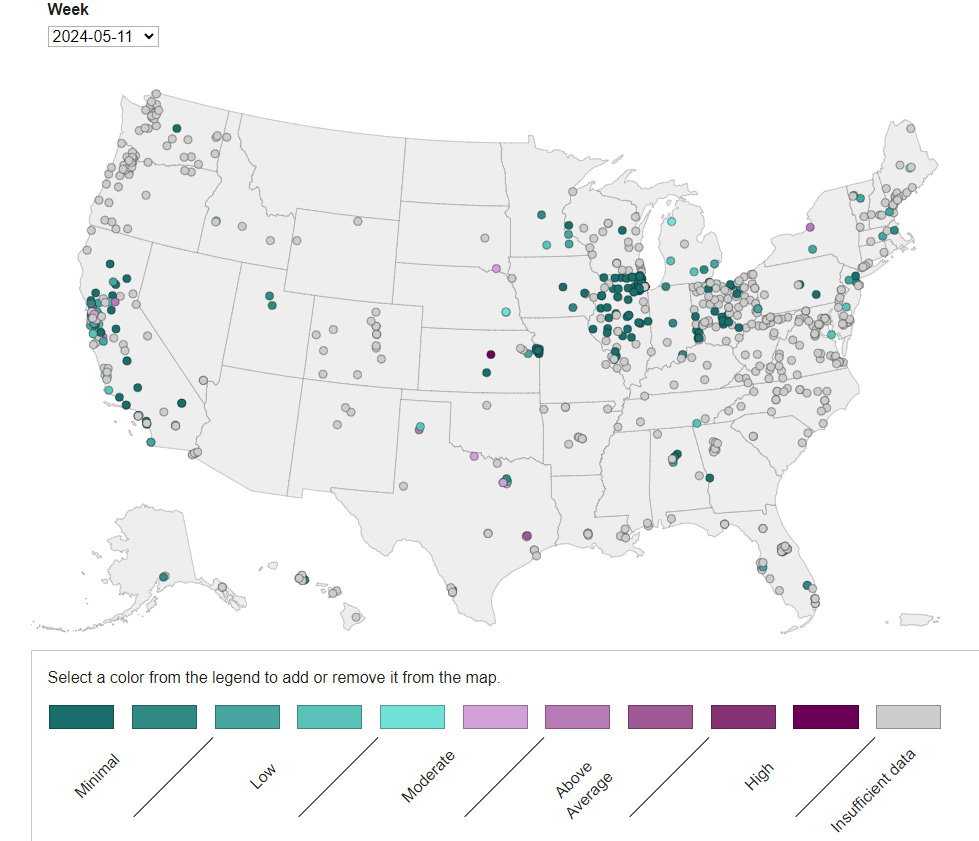














.jpg)
No comments:
Post a Comment